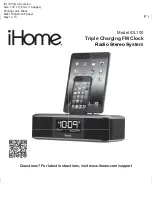
TRT800 / P/N 800ATC-(200)-(200)
Operation and Installation
26
Document-No: 03.2102.010.71e / Revision: 2.02
Only the assigned AA has to be used and must not be modified at any
time, because a duplicate address would jeopardize the data
surveillance and integrity figures of Mode S.
If no AA is stored, after power on the display shows
“CRADLE OFF” and the transponder operates in Mode A/C.
(Configuration of the AA: see section 4.2.1)
4.1.3 Aircraft
Category
(AC)
Code Description
Code Description
11
Emergency Vehicle 1C
Ultra-Light / Paraglider
12 Service
Vehicle 1E Drone
19
Glider
21
Aircraft (D-Exxx) < 15.500 lbs,
Motor Glider (D-Kxxx)
1A
Balloon & Airship
22
Aircraft
≥
15.500 lbs,< 75.000 lbs
1B Paratrooper
27 Rotorcraft
Only one of the Codes mentioned in the table above must
be used.
4.1.4 Flight-ID
(FID)
Per ICAO regulation Mode-S data must contain a valid flight identification
(FID), to ensure that the correlation between flight plan and radar data
will work automatically.
FID setting is required to correspond to the aircraft identification that has
been (correctly!) specified at item 7 of the ICAO flight plan. It contains
seven characters at a maximum (left-aligned, no additional zeros,
dashes or spaces/blanks.)
For an aircraft using a company call sign, the Flight-ID mostly consists of
the ICAO three-letter designator for the aircraft operator, followed by an
identification code, e.g. KLM511, BAW213, JTR25.













































